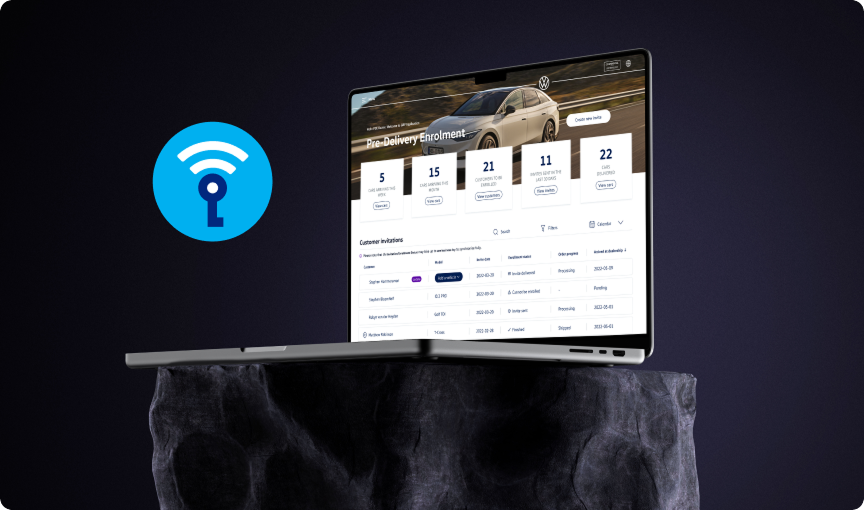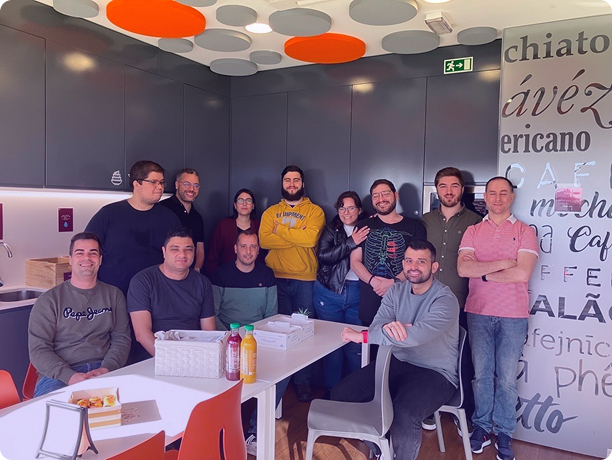Pre-

UX Research
Design Strategy
Design Audits
Design Leadership
Backlog Management
UX Refinements
Business Roadmapping
Usability Testing
Visual Design
Context
The Pre-Delivery Enrolment (PDE) app is a vital part of Volkswagen’s digital ecosystem, helping dealers track vehicle orders and manage customer invitations while allowing customers to access VW digital services before delivery. Its expansion to new European markets brought challenges in scaling features and improving usability for dealers and customers.
Client
Role
Senior product designer – February 2022 / December 2023
Services
Research & discovery, information architecture, wireframing, user flows, UI/UX design, visual design, prototyping, mentorship for junior designers
Team
A multidisciplinary team in Portugal, consisting of full-stack developers, site reliability engineers, and QA engineers. The product design team included myself and a junior designer working under my guidance.
Tools
Figma, Figjam, Sketch, Zeplin, Miro, Dovetail, Userzoom, Jira, Confluence
Problem statement
In response to these challenges, we identified the possible solutions…
Redefine the experience
Simplify enrolment for customers and equip sales staff with better tools to manage onboarding and upselling, building trust in Volkswagen’s digital ecosystem.
Optimise design operations
Centralise design assets into a single source of truth. Transition designs from Sketch to Figma and reshape design’s relationship with the dev team.
Build for scalability
Ensure design consistency across EU markets while addressing unique legal and workflow demands of individual countries.
Addressing user education
To support user education, we implemented several strategies, such as:
The solution, initially offered in English and German, was enthusiastically received by markets and users. It boosted conversions, increasing the rate of completed invitations by approximately 12%. Additionally, the video guides were adopted by VW’s marketing department for training new users.
The multi-brand PDE solution
Volkswagen’s economic difficulties coincided with the successful implementation of the FAQ and resources sections, shifting the project’s focus. With PDE’s core functionalities fully developed, subsequent changes were incremental, prioritising refinement. The new priority was to positionPDE as Volkswagen’s flagship onboarding tool to market it as a solution for other brands and expand its market reach to more European countries.
Delivering meaningful results, together
Building on our collaboration with the systems architect, project manager, and dealership processes, we focused on streamlining feedback and expediting product iteration cycles by directly engaging with users.
The PDE team implemented a system to monitor key performance indicators (KPIs) and identify user journey bottlenecks using June.So and New Relic. We integrated a SUPR-Q survey microsite and an accessible feedback tool with a text box and Likert scale for direct user feedback and rapid responses. This streamlined bureaucratic processes, significantly accelerating the product iteration cycle.
Close collaboration with key designers in Germany on the B2C design system (Design6) and the marketing team ensured consistency across all digital communications. This collaboration resulted in the creation and approval of new UI elements that were subsequently integrated into Design6, like the table view, pagination and scrollable modal presented below.
Final considerations
By 2024, PDE became Volkswagen Group’s flagship onboarding solution, setting a benchmark for user experience and information architecture. Its adoption drove user acquisition, revenue growth, and positive OKRs through backend and feature licensing.
PDE’s success reflected the team’s collaborative spirit, celebrated in a company-wide all-hands meeting as both a user-focused product and a testament to their passion and ingenuity.

As the project grew, I took on additional responsibilities, hiring and onboarding three new designers in 2023. Drawing on PDE’s complexity, I guided them in understanding global business operations and scaling design, transitioning into a de facto design team lead while balancing mentorship with advancing PDE’s strategic goals.
PDE’s success went beyond creating a product—it transformed user interaction with a global brand and built a scalable foundation for growth. This experience highlighted the importance of addressing user needs, promoting collaboration, and uniting business vision to deliver impactful solutions.

Let’s continue this conversation!
If this case study piqued your interest or you’d like to dive deeper into the design of a global onboarding product, feel free to connect with me on LinkedIn.














